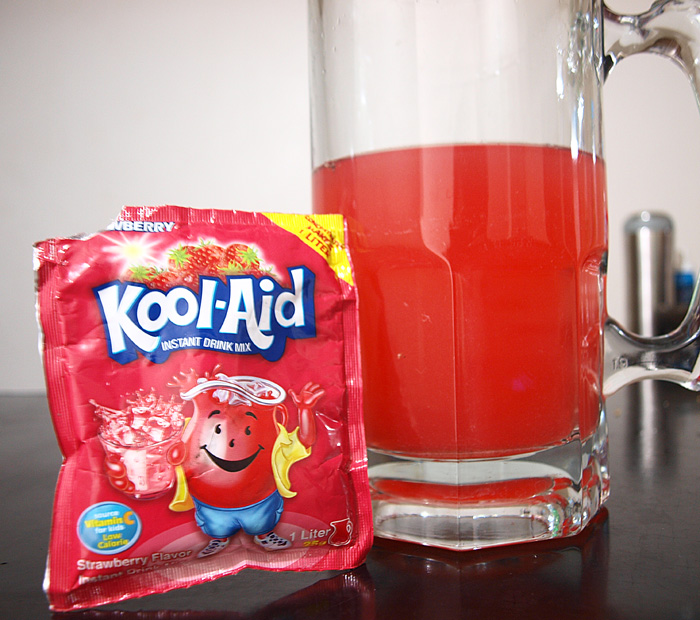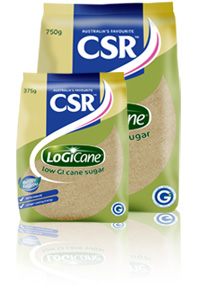
One of the big complaints about research on fructose (the dangerous half of ordinary table sugar) is that many of the studies are done on rats, not humans. But a pair of recent studies have shown that sugar is just as dangerous for primates (including us) as it is for rats.
People defending our right to continue eating sugar (‘in moderation’ of course) frequently waggle their fingers at the studies and say just because it kills a rat doesn’t mean it will harm a human. One defender of the white stuff, Dr Jennie Brand-Miller, recently went so far as to suggest that sugar doesn’t do us any direct harm at all.
There’s a good ethical (and legal) reason that human studies are few and far between. The ones that have been done have inevitably resulted in immediate harm to the human subjects. A study where the expected outcome is to harm the participants makes lawyers nervous. I guess that’s why you don’t tend to see studies on what happens if you don’t open the parachute.
But the science needs to be done. There really is no other way to combat the incessant ‘sugar in moderation’ chant of the processed food industry and its toadies. Thankfully a few US Universities are prepared to push the envelope.
Just last week a team from Vanderbilt University’s paediatrics department published the results of their year-long study into the effects of fructose on Rhesus Monkeys. Their stated aim was to “induce insulin resistance” (the first step on the path to Type II Diabetes) in a primate using the same methods which are so successful in rodents.
The Vanderbilt folks chose Rhesus monkeys because they are physiologically similar to us and they develop the same chronic diseases that we do (and they are far less picky than humans about being locked in cages for 12 months). Dr Bremer and his team studied a group of 29 adult male monkeys aged from 12-20 years (approximately equivalent to human ages of 36-60).
At the start of the study, all the monkeys had perfectly normal blood glucose levels and were otherwise fit and healthy. The diet for the duration of the study was standard monkey lab chow (designed to give them all the nutrients they need in a healthy mix which is 59% Carbohydrate, 30% Protein and 11% Fat). They were also given access to up to 500ml per day of Kool-Aid. The monkeys could consume as much (or as little) of the food and Kool-Aid as they wanted.
Kool-Aid is a fruit flavoured powdered sugar drink mix sold in the US. The closest Australian equivalent is Tang (which is really just Kool-Aid with a multi-vitamin chucked in). The Kool-Aid delivered up to 75g of pure fructose a day to the monkeys. I say ‘up to’ but the reality was that the monkeys drank the Kool-Aid and then topped up their calories with chow. They weren’t going to leave any of the good stuff in the tin.
Unfortunately for our furry friends, they were never healthier than when they hadn’t drunk the Kool-Aid. Four of them developed Type II diabetes between 6 and 12 months after starting. The rest of them were well on their way to the same destination (with blood glucose and insulin readings that would have had them on the latest anti-diabetes drugs if they had been humans).
They put on weight (an average of 9% of their starting weight), the percentage of their body which was fat increased by 15%, they ate more of everything, exercised less and their blood lipids were a mess.
Their fasting triglycerides (a strong risk factor for heart disease) increased by a whopping 87%, HDL (good) cholesterol decreased and LDL (bad) cholesterol increased (by 14% each). In other words these critters were also on the fast track to a heart attack.
The experiment would have been better if they’d had 29 monkeys eating nothing but chow to compare the results to. But there is no evidence to suggest that monkeys on a standard lab chow diet ordinarily develop these symptoms (and certainly not in less than a year).The researchers set out to give diabetes to a group of primates (with an almost identical metabolism to ours). All they did was allow them access to a sugar which is plentiful in our food supply. They didn’t test chemicals on them. They didn’t inject them with drugs. They just fed them with the same stuff we give our kids. And they achieved their aim – four had diabetes and the rest were on their way – in less than a year!
Still not enough to get you to step away from the Froot Loops? Still not ready to believe, ‘till they do this to humans? Then you’re in luck, because a human study has also just been released.
This time, a team at the University of California convinced 48 healthy (human) adults to consume four cans of soft drink a day for two weeks (about the same as one in 20 Americans do every day of their lives). Some of the soft drinks were sweetened with glucose, some with fructose (the two halves of sugar) and some with High Fructose Corn Syrup (55% fructose, 45% glucose).
And guess what? That’s right, the result was exactly the same as for the monkeys. The blood fat measurements (which point to heart disease) started going in the wrong direction for the fructose and HFCS groups (and nothing happened to the glucose group). No-one was given diabetes, but it was just a 2 week study.
Try as they might, researchers have never been able to get results like these by feeding people fat or stopping them from exercising. But these latest studies could barely be more definitive on whether there is danger in that thar can of soda.
Eat fructose and the only question is when you will develop diabetes and heart disease. If you happen to be a Rhesus Monkey (well done, you, for being able to read this) you have as little as six months, if not, you might get a bit longer. But have no doubt, it will happen.

















and “natural” sweeteners like honey, agave, maple syrup, dried fruit, fruit juice etc do this too. It’s just gob-smacking.
David Gillespie has an interesting book on the topic: http://sweetpoison.com.au/
I liked his quote that fructose was invented by plants to get the animals hooked on their seed distribution system. Cunning. Then companies took the idea of “how can we get those animals addicted to our products” that step further…
An interesting podcast can be heard on the ABC (Australia)
http://www.abc.net.au/local/stories/2011/06/10/3241046.htm
Fightening for sure. So to sweeten something with pure glucose is ok? Is whole fruit ok?
Ugh. Chills me to the bone.
Day 10 for me. I’m now at the stage of breaking my habits. I haven’t had a craving for anything sweet since day two. This is a timely and blunt reminder that this is stuff is deadly.
Holy crap. We have to tell everyone.
Vicki … glucose is fine (if you are off sugar) and whole fruit is also fine (but I would keep it to a maximum of two pieces a day for an adult – one for a child).
Cheers
David.
Thanks for continuing to fight the good fight, for keeping this critical issue top-of-mind. 🙂
David,
think the problem is that those rhesus monkeys didn’t read the public health messages about eating everything in moderation.
I’m pretty sure that if they could read, they would have taken this message on board and moderated their consumption of Kool-Aid!
This strategy is supposed to work for humans, isn’t it?
Hi David,
Saw this today and thought of you. It contains a link to a presentation given at the Ancestral Health Symposium this year. Thought you might find it interesting:
http://www.presentationzen.com/presentationzen/2011/09/medical-doctor-presents-at-health-symposium.html
“The idea to eat less fat and less saturated fat was certainly a mistake.”
I don’t doubt that the sugar is a bad idea, but when you say:
“They didn’t test chemicals on them.”
That is not strictly true.
Koolaid has a lot of ingredients, including some artificial colors and Butylated Hydroxyanisole (BHA).
Food chemicals cause some people big problems, including blood sugar disregulation. See the FailSafe diet or the Fedup website for more info.
What about beer and wine? Are they fructose polluted.
so…what would you suggest for a person who suffers hypoglycemia? I am kind of tired of waking up from a coma when I do not get enough sugar.